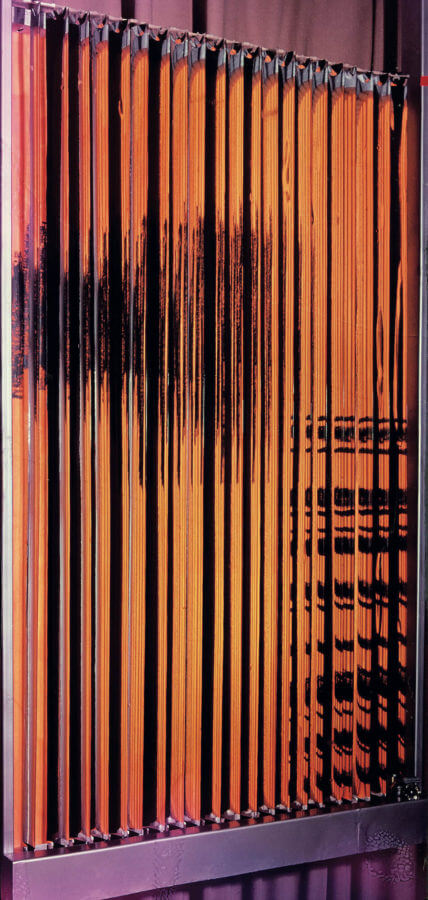Behjat Sadr, on Kinetic Works
c. 1967Extract from the publication Behjat Sadr. Traces, Paris, Zamân Books, 2014.
No critic, no writer is able to talk about a painting and express it better than the work itself. What’s more, these texts end up confusing the audience.
I would like to answer a question I’m frequently asked. Why did I change my style when my early work was extremely and widely appreciated?
Everyone has a different nature, which cannot be changed. Some people remain faithful to their beliefs to the end, while others keep themselves in motion, in sync with the motion of our time, a motion so fast-paced and dynamic in the 20th century. I belong to this last category of people […]
I cannot keep quiet, and motion is something that exists in nature. Nature is colour, shape and motion, and I want my works to express these three elements. Shape as shape, colour as colour, and motion as motion. Not a tree whose branches would make a shape, and whose leaves would embody colours, and whose shapes and colours would be set in motion by the wind. Today, I avoid putting a fixed work in front of the audience.
I have introduced the third dimension into my kinetic works. Instead of venetian blinds, I could use vertical or horizontal lines, but introducing a third dimension brought a convenient additional meaning. I prefer these bright-coloured three-dimensional shutters to an antique door I once bought by chance and that I could use in my work to introduce the third dimension. Salvaging the remains of the dead in order to dance with them, which is such a widespread practice nowadays, is of no interest to me. I like producing new things with today’s materials.
These works represent something convenient to me today. I used to live with my past works. Today, I am not satisfied with these works anymore. The artist needs to paint what she is attracted to. In my early days, I would work with mixed and contrasting colours. Later on, the colours went away, and traces and rhythms took the place of colours in motion. Today, I am more attracted to optical or engine-induced motion. Just like I cannot stand to see my work embodying fixedness, I cannot remain fixed in a given style for years. Motion needs to drive my own individual path.
There are different ways to express the internal state and to make an impression on the audience […] One may show this internal state through the moving representation of a human being, and another by juxtaposing two lines, one black and one red.
